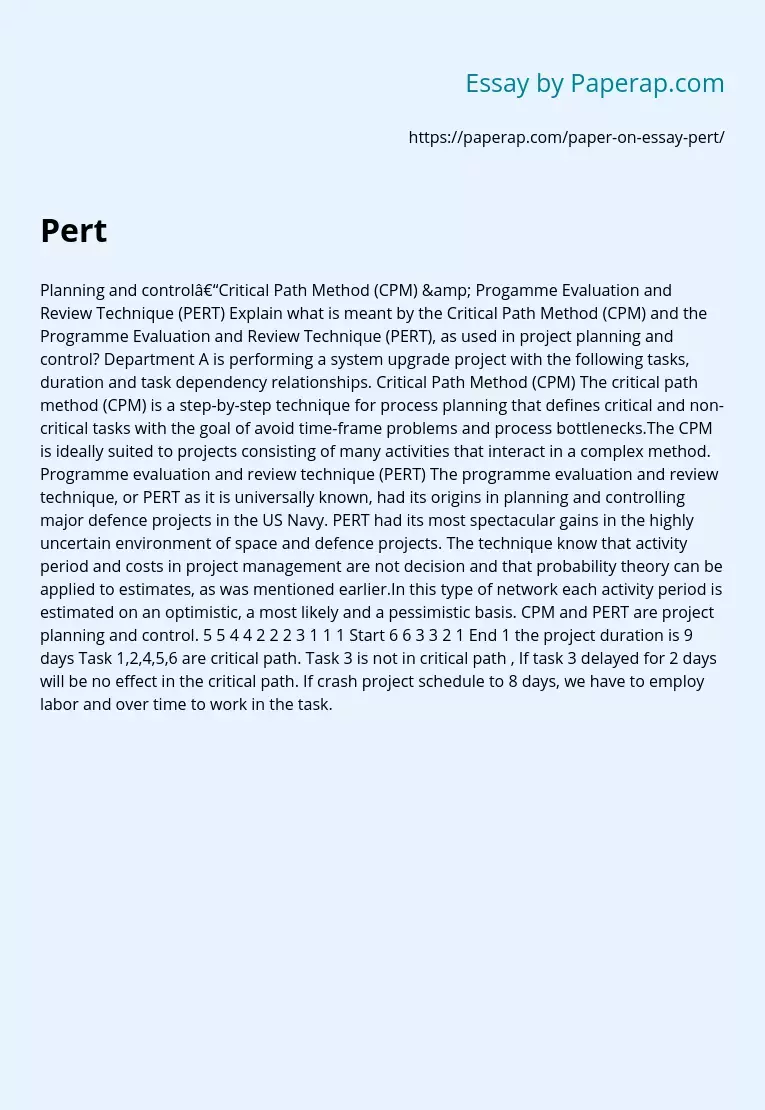PERT and CRM in Project Planning and Control
Explain what is meant by the Critical Path Method (CPM) and the Programme Evaluation and Review Technique (PERT), as used in project planning and control?
Department A is performing a system upgrade project with the following tasks, duration and task dependency relationships. Critical Path Method (CPM) The critical path method (CPM) is a step-by-step technique for process planning that defines critical and non-critical tasks with the goal of avoid time-frame problems and process bottlenecks.
The CPM is ideally suited to projects consisting of many activities that interact in a complex method.
Programme evaluation and review technique (PERT) The programme evaluation and review technique, or PERT as it is universally known, had its origins in planning and controlling major defence projects in the US Navy. PERT had its most spectacular gains in the highly uncertain environment of space and defence projects. The technique know that activity period and costs in project management are not decision and that probability theory can be applied to estimates, as was mentioned earlier.
In this type of network each activity period is estimated on an optimistic, a most likely and a pessimistic basis. The two planning methods use a common approach to design a network and determine its critical path. They are used to successfully complete a project and therefore are used together with each other. However, the truth is that CPM differs from PERT in that the latter focuses on time, while the former focuses on the trade-off between time and time.
PERT and CRM in Project Planning and Control. (2019, Jun 20). Retrieved from https://paperap.com/paper-on-essay-pert/
